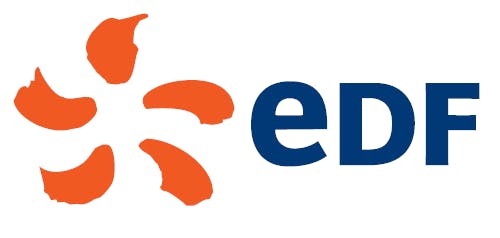3.4 Responsible development
3.4.2 Responsible regional developmentHinkley Point
As a result of the dialogue and consultation process at Hinkley Point C, the impact of road traffic and noise pollution was assessed in detail, and the project continues to advance with an agreed transport strategy and traffic plan. Measures have been taken to reduce the total number of vehicles on the road by developing park & ride and freight management facilities. The number of vehicles has been reduced with the recent introduction of double-decker busses, a digital car-sharing system, and use of maritime transport methods (the Hinkley Point C jetty will help to cut out 100,000 HGV journeys over the construction period). Vehicle itineraries are monitored and tracked by GPS. Noise from the site is also monitored by noise monitoring stations near the site perimeter, then directly reported to the local council. All breaches of set noise limits are investigated. In terms of noise attenuation, a large earth berm was set up on the southern perimeter to protect local communities from noise and visual impact. Eligible properties along the road also had their double-glazing replaced free of charge.
Lightning project (Abu Dhabi)
The Lightning project involves connecting two islands each located approx. 130km off the coast of Abu Dhabi by cable, reducing the use of fossil fuels to power these islands and cutting their carbon footprint by approx. 30%. The work involves dredging trenches into which cables are then laid, before being sealed up with quarry materials. The support measures are mainly focused on protecting the marine environment as a section of the works lies close to a major marine nature reserve (Marawa zone), home to both dugongs and marine turtles. For example, an agitation model was used to calculate movements of turbid waters, positioning underwater curtains to limit the spread of these waters and protect sea grasses and corals. Water quality will be monitored throughout the project using buoys to take real-time turbidity measurements and regular water samples taken for laboratory analysis: in case of excess turbidity, works at sea will be limited until turbidity returns to normal.
3.4.1.2.4 New participatory financing tools strengthen the relationship with stakeholders
Since the first such fundraising drive in 2015, EDF Renewables has launched 60 crowdfunding initiatives raising over €9 million from 4,944 private individuals to finance solar and wind power projects. This funding method has intensified: in 2022 alone, 19 such initiatives were launched by EDF Renewables in partnership with crowdfunding operators, raising over €2 million from 1,414 investors.
In Belgium, following on from the success of Luminus Wind Together (its first crowdfunding initiative for wind farms), Luminus launched Lumiwind, a cooperative allowing the general public and those living close to wind farms to invest in energy transition. At the end of 2022, Lumiwind had 2,180 members, including 460 new members who subscribed to 71,249 shares over the year.
3.4.1.3 Group key performance indicator
GROUP KEY PERFORMANCE INDICATOR
For projects of over €50 million examined by the Group Executive Committee’s Commitments Committee (CECEG) with a significant impact on localities and/or the environment, the Group entities in question implement the appropriate dialogue and consultation, in line with the Equator Principles.
The Group’s key performance indicator in this respect is the annual proportion of such projects for which a dialogue and consultation processes has been initiated. Practically speaking, this means that as a minimum, each project has initiated or implemented a dialogue and consultation strategy and that the various stakeholders (in particular local and indigenous communities) are taken into account, e.g. through specific measures being taken to address their expectations.
In 2022, this indicator was 100% for all projects within the scope of the defined criteria.
Annual rate of projects for which a dialogue and consultation procedure is engaged (in %)

This graph shows the annual rate of projects for which a dialogue and consultation procedure is engaged (in %).
2020: -
2021: 100
2022: 100
Target: 100
3.4.2 Responsible regional development
The EDF group is committed to contributing to the development of the regions where it operates, by creating local jobs, purchasing locally, creating economic value and providing a tax revenue. The EDF group is also committed to developing low-carbon sources of energy and access to energy in developing countries.
3.4.2.1 Contribution to development through jobs: employment footprint
The employment footprint of a territory, project, or scope of business may be broken down into direct impacts (EDF employees, see section 3.3.3.9 “Detailed information on the Group's workforce”), indirect impacts (the impact of EDF purchases throughout its supply chain) and induced impacts (impact of spending by employees and suppliers, and induced employment generated by taxation). Both EDF employees and the employees of companies in the supply chain spend some of their salary in the region and pay taxes and duties.
3.4.2.1.1 Global study
One direct job supports 4.2 indirect and spin-off jobs.
The EDF group contributes to the development of the regions where it operates, by creating local jobs. The 2022 study shows that 325,200 jobs (including 62,000 direct jobs) are supported by EDF. The leverage effect has remained at the same levels as last year: over the whole French territory, one direct job generates 4.2 indirect and induced jobs in the locality in question; EDF supports some 1.1% of all French jobs.
